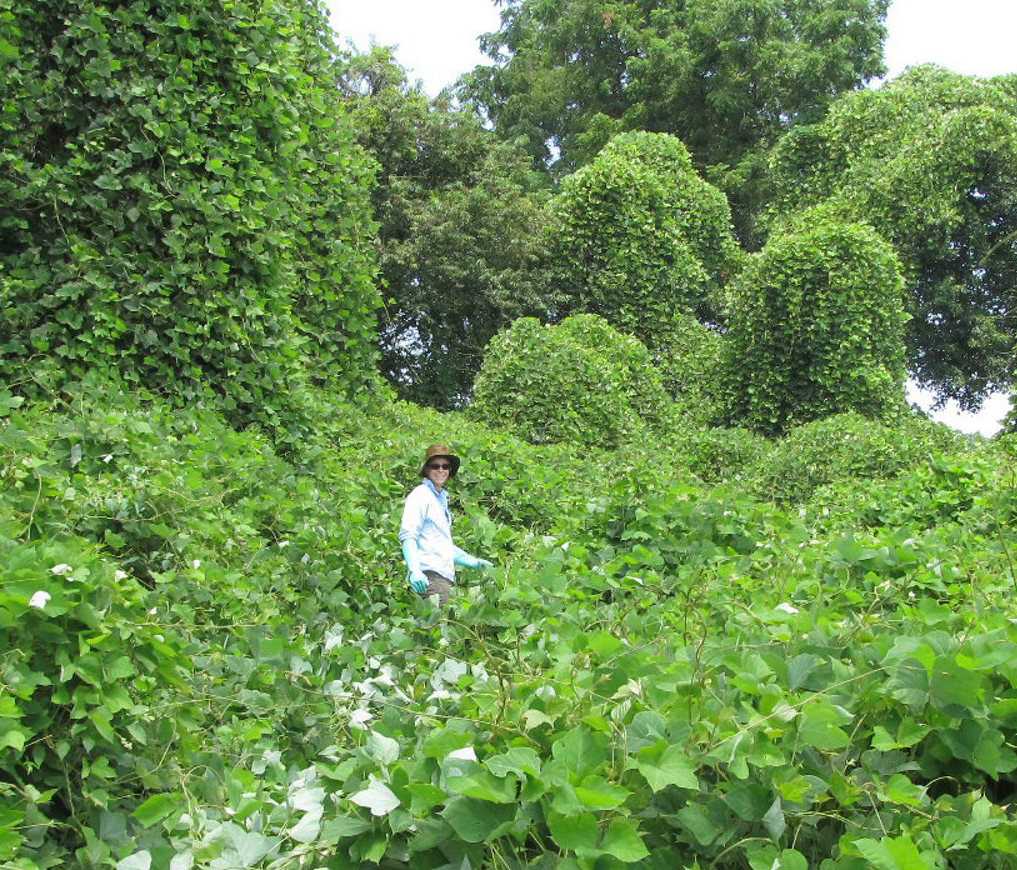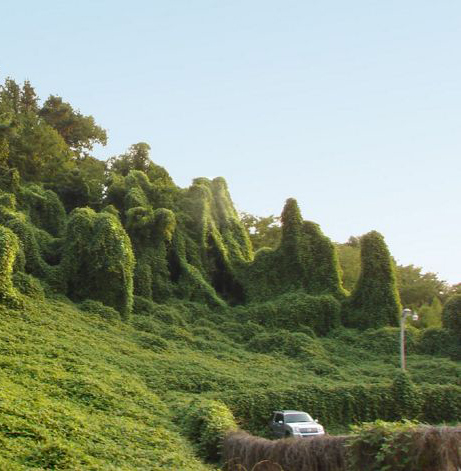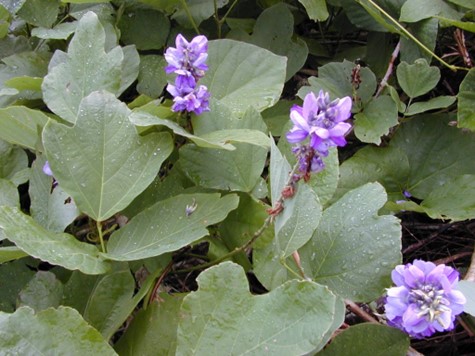The Vine that ate the South
Imagine a super plant the grows a “mile-a-minute” and can take over the entire Southern tier of America. Now this creeping, climbing perennial vine terrorizes native plants all over the southeastern United States and is making its way North. Kudzu is native to Japan and southeast China. It was first introduced to the United States during the Philadelphia Centennial Exposition in 1876 where it was touted as a great ornamental plant for its sweet-smelling blooms and sturdy vines. From the 1930s through the 1950s, the Soil Conservation Service promoted it as a great tool for soil erosion control and was planted in abundance throughout the south. Little did we know that kudzu is quite a killer, overtaking and growing over anything in its path. Kudzu grows out of control quickly, spreading through runners (stems that root at the tip when in contact with moist soil), rhizomes and by vines that root at the nodes to form new plants. Once established, kudzu grows at a rate of one foot per day with mature vines as long as 100 feet long. As a result, it’s not uncommon to see these plants engulf utility poles, railroads and large stretches of forest. That’s how it got its nickname: “The vine that ate the South.”
The leaves are large, created a lot of shade and looked pretty, leading visitors to take seeds home so that they could try growing it themselves. However, the kudzu soon began to creep out into the lawn, and so Sam Pleas dug it up and threw it in a trash heap near his barn. The vine took root, though, and began to cover both the trash pile and the nearby building. Pleas soon noticed that animals like hogs and horses enjoyed eating the kudzu, and realizing that the plant could be a low-cost way to feed livestock, he and his wife began promoting the vine as a “miracle solution” for southern farmers. In early summer, Kudzu could reportedly grow up to a foot a day — or around 60 feet within a single growing season.
Fortunately, the USDA has been experimenting with fungal herbicides to target kudzu, and grazing by livestock has helped wipe out a decent portion of the kudzu. In addition, researchers claim that there are some beneficial byproducts to kudzu. Parts of the plant have been used to make paper, fabric, baskets, rope, cushion stuffing, soaps, lotions and other beauty products. Some research has even looked into using kudzu as a potential source of biofuel. But with that said, just make sure you don’t let it too close to your home.
Weed attack
Give weeds an inch…
And they’ll take a yard.
How can you tell an unidentified plant in your garden is a weed?
Try to pull it out. If it comes out easily, it’s not a weed.
The kudzu in my neighbor’s yard is vibrant and colorful.
Good thing I switched his weed killer to MiracleGro.
The Caribbean is under attack from invasive plant life and other weeds.
The situation is dire, specifically the Cuban Thistle Crisis.
November 18th Birthdays
1992 – Hayley Law, 1984 – Nayantara, 1962 – Jodie Foster, 1980 – Megyn Kelly
1992 – Nathan Kress, 1981 – Matthew Baynton, 1987 – Daymon Wayans, 1968- Owen Wilson





